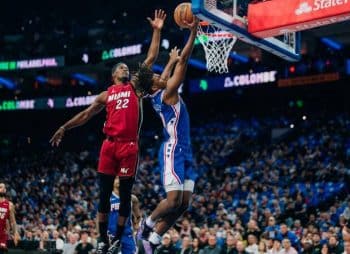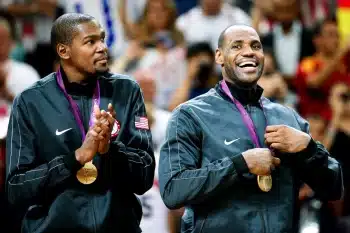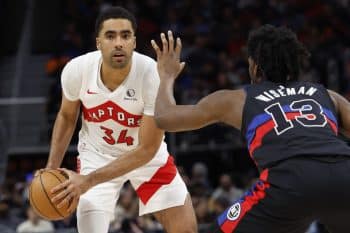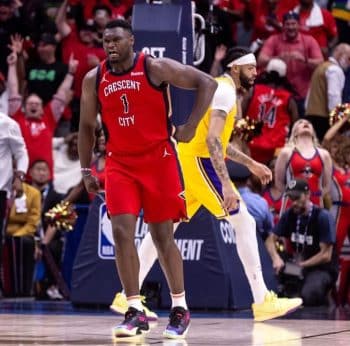NBA
Projecting Cap Space Under Potential Labor Deal

The NBA and NBA Players Union are nearing labor peace, working towards an extension of the Collective Bargaining Agreement (CBA) by December 15. The goal for both the owners and players is to reach a new, long-term deal early, avoiding a lockout next summer.
Exact details of an agreement that has yet to be reached are obviously unavailable, but some of the working concepts have leaked. The basic split of basketball related income (BRI) is expected to remain unchanged from the 49-51 percent band in the current deal.
The sooner a new CBA can be hashed out, the better for teams who need to make decisions based on salary-cap projections for the offseason and the summers to come. Leading up to previous lockout years, teams were essentially working in the dark, hoping future rule changes wouldn’t blow up their plans.
With a new deal arriving, likely well before the February 23 trade deadline, teams should have the necessary information to plan ahead.
Already, the NBA raised its cap projection for the 2017-18 season to $103 million, with a $123 million luxury-tax threshold. The league had originally predicted a $107 million cap, but rolled it back to $102 million when teams began to spend at such a high level in July.
That extra million in cap may not be enough to offset some of the prospective rule changes that could additionally limit spending power.
The working assumption is that minimum salaries, exceptions and rookie-scale contracts for first-round picks will jump by roughly 50 percent.
When calculating cap space, teams are charged a rookie-minimum salary for every open roster spot through 12 players. The current CBA dictates next season’s minimum to be $562,493, but it could scale up by 50 percent to $843,740.
A team with eight players would have $1.1 million total in four roster charges based on the current rules. That would jump to $2.2 million with a higher minimum salary—offsetting a $1 million bump in the NBA’s salary cap.
Similarly, the top overall pick in the 2017 NBA Draft has a rookie-scale salary of $5.1 million for next season. If the new CBA raises that by 50 percent as well, the player would take up $7.6 million unsigned. Teams currently have the latitude to pay up to 120 percent of that scale amount, which is why some franchises delay signing their first-rounders until after they’ve used every-last bit of salary cap space.
Exceptions also count against the cap. Teams that might have had $7.8 million in cap this past summer would technically be over by virtue of the Mid-Level Exception ($5.6 million) and Bi-Annual Exception ($2.2 million). In that situation, the exceptions could have been renounced to allow the team to sign a player at $7.8 million. Otherwise the team could stay over and use the exceptions to sign two or more players at a combined $7.8 million.
Factoring in a 50 percent bump, the Mid-Level would climb to $8.7 million and the Bi-Annual to $3.4 million. Together, teams over the cap would have $12.1 million in spending power to spend, with $8.7 million being the most they could give in starting salary to a single player.
A team that might be $12.1 million under the cap would have the choice of staying over with their exceptions.
Maximum salaries may stay flat, given how much they’ve jumped with the NBA’s current $94.1 million salary cap, but the criteria may change. Currently, players with up to six years of experience project to max at $24.2 million, those with seven to nine top out at $29 million and 10 or more would start at about $33.9 million.
Another key factor in determining space is the various formulae to determine a free agent’s cap hold. When a player’s contract expires, they still take up salary cap space on a team’s books until they’re re-signed, renounced or ink with another franchise.
The new CBA is expected to raise the cap hold for players at the end of rookie-scale contracts. Instead of giving Kawhi Leonard an extension, which would have limited the San Antonio Spurs’ spending power in 2015, the team let him become a restricted free agent with a $7.2 million cap hold. After using their space to bring in LaMarcus Aldridge, the Spurs gave Leonard a deal starting at $16.4 million. That $7.2 million would jump to $8.7 million (300 percent of his previous salary instead of 250 percent).
Victor Oladipo’s cap hold would have been $19.7 million next summer at 300 percent of his $6.6 million salary (up from $16.4 million). Instead, the Oklahoma City Thunder gave him an extension starting at $21.0 million.
As far as standard free agents not coming off rookie-scale deals, it’s unclear if the cap holds will climb, and if so by how much?
Finally, the new agreement is not likely to contain another amnesty clause, a mechanism in the current CBA to erase a single contract from a team’s cap (although the player still receives their salary).
The following is an estimate of the maximum cap space teams would have if they let all their free agents go. Rookie-scale contracts and empty roster charges are multiplied by a factor of 1.5. The working assumption is that teams will finish in the same draft order as last season. Obviously, that won’t be the case, but it’s just a bit too early in the year to take the standings seriously.
| Team | Maximum (in millions) |
Potential Free Agents |
|---|---|---|
| Golden State Warriors | $58.6 | Stephen Curry, Kevin Durant, Andre Iguodala, Shaun Livingston, Zaza Pachulia, David West, Ian Clark, James McAdoo, Anderson Varejao, JaVale McGee |
| Sacramento Kings | $54.7 | Rudy Gay, Arron Afflalo, Anthony Tolliver, Matt Barnes, Darren Collison, Ben McLemore, Omri Casspi, Ty Lawson, Jordan Farmar |
| Chicago Bulls | $53.9 | Dwyane Wade, Rajon Rondo, Taj Gibson, Nikola Mirotic, Michael Carter-Williams, Isaiah Canaan, Cristiano Felicio, R.J. Hunter |
| Philadelphia 76ers | $47.3 | Nerlens Noel, Ersan Ilyasova, Sergio Rodriquez, Gerald Henderson, Richaun Holmes, Robert Covington, Hollis Thompson, T.J. McConnell |
| Brooklyn Nets | $40.7 | Bojan Bogdanovic, Luis Scola, Greivis Vasquez, Randy Foye, Anthony Bennett, Sean Kilpatrick, Joe Harris |
| Los Angeles Clippers | $39.3 | Chris Paul, Blake Griffin, J.J. Redick, Luc Mbah a Moute, Marreese Speights, Brandon Bass, Raymond Felton, Alan Anderson, Paul Pierce (retiring) |
| Denver Nuggets | $39.0 | Danilo Gallinari, Mike Miller, Jarnell Stokes |
| Dallas Mavericks | $37.0 | Dirk Nowitzki, Andrew Bogut, Deron Williams, Devin Harris, Quincy Acy, Salah Mejri, Dorian Finney-Smith, Nicolas Brussino |
| Boston Celtics | $32.2 | Amir Johnson, Tyler Zeller, Jonas Jerebko, Kelly Olynyk, James Young, Demetrius Jackson, Jordan Mickey, Gerald Green |
| Utah Jazz | $32.2 | Gordon Hayward, George Hill, Boris Diaw, Shelvin Mack, Joe Ingles, Jeff Withey, Raul Neto, Joel Bolomboy |
| Los Angeles Lakers | $31.9 | Jose Calderon, Nick Young, Tarik Black, Marcelo Huertas, Metta World Peace, Thomas Robinson |
| Phoenix Suns | $30.6 | P.J. Tucker, Alex Len, Leandro Barbosa, John Jenkins, Alan Williams, Derrick Jones |
| Orlando Magic | $29.7 | Serge Ibaka, Jeff Green, Jodie Meeks, C.J. Watson, C.J. Wilcox, Damjan Rudez, Arinze Onuaku, Stephen Zimmerman |
| New Orleans Pelicans | $28.3 | Jrue Holiday, Tyreke Evans, Langston Galloway, Dante Cunningham, Terrence Jones, Lance Stephenson |
| San Antonio Spurs | $25.7 | Pau Gasol, Manu Ginobili, Patty Mills, Dewayne Dedmon, David Lee, Jonathon Simmons, Bryn Forbes, Nicolas Laprovittola |
| Indiana Pacers | $25.4 | Jeff Teague, Rodney Stuckey, C.J. Miles, Lavoy Allen, Aaron Brooks, Kevin Seraphin, Joseph Young, Rakeem Christmas, Glenn Robinson III, Georges Niang |
| Miami HEAT | $21.4 | Wayne Ellington, Josh McRoberts, Derrick Williams, Udonis Haslem, James Johnson, Dion Waiters, Luke Babbitt, Willie Reed, Josh Richardson, Rodney McGruder |
| New York Knicks | $20.9 | Derrick Rose, Brandon Jennings, Justin Holiday, Sasha Vujacic, Maurice N’dour, Marshall Plumlee, Ron Baker |
| Minnesota Timberwolves | $18.9 | Jordan Hill, Brandon Rush, Shabazz Muhammad, Adreian Payne, John Lucas III |
| Atlanta Hawks | $16.0 | Paul Millsap, Tiago Splitter, Kyle Korver, Kris Humphries, Thabo Sefolosha, Mike Scott, Tim Hardaway Jr., Mike Muscala, Ryan Kelly |
| Houston Rockets | $12.0 | K.J. McDaniels, Tyler Ennis, Nene, Bobby Brown, Kyle Wiltjer |
| Toronto Raptors | $13.2 | Kyle Lowry, Patrick Patterson, Jared Sullinger, Norman Powell, Fred VanVleet |
| Charlotte Hornets | $0 | Spencer Hawes, Ramon Sessions, Roy Hibbert, Brian Roberts, Christian Wood, Aaron Harrison, Treveon Graham |
| Cleveland Cavaliers | $0 | Mike Dunleavy, DeAndre Liggins, Jordan McRae, Kay Felder, Chris Andersen, James Jones |
| Detroit Pistons | $0 | Aron Baynes, Kentavious Caldwell-Pope, Reggie Bullock, Beno Udrih, Darrun Hilliard, Michael Gbinije |
| Memphis Grizzlies | $0 | Zach Randolph, Tony Allen, Vince Carter, JaMychal Green, Troy Williams |
| Milwaukee Bucks | $0 | Greg Monroe, Tony Snell, Michael Beasley, Jason Terry, Steve Novak |
| Oklahoma City Thunder | $0 | Andre Roberson, Nick Collison, Anthony Morrow, Joffrey Lauvergne, Jerami Grant, Semaj Christon |
| Portland Trail Blazers | $0 | Mason Plumlee, Festus Ezeli, Pat Connaughton, Tim Quarterman |
| Washington Wizards | $0 | Otto Porter, Trey Burke, Marcus Thornton, Daniel Ochefu, Danuel House, Sheldon McClellan |
Teams can make trades or buy-out players to open up additional cap space. Several players have non-guaranteed salary, or team/player options. In most cases, to get to maximum cap room, the assumption is all players without 100 percent locked in salary are off the books.











